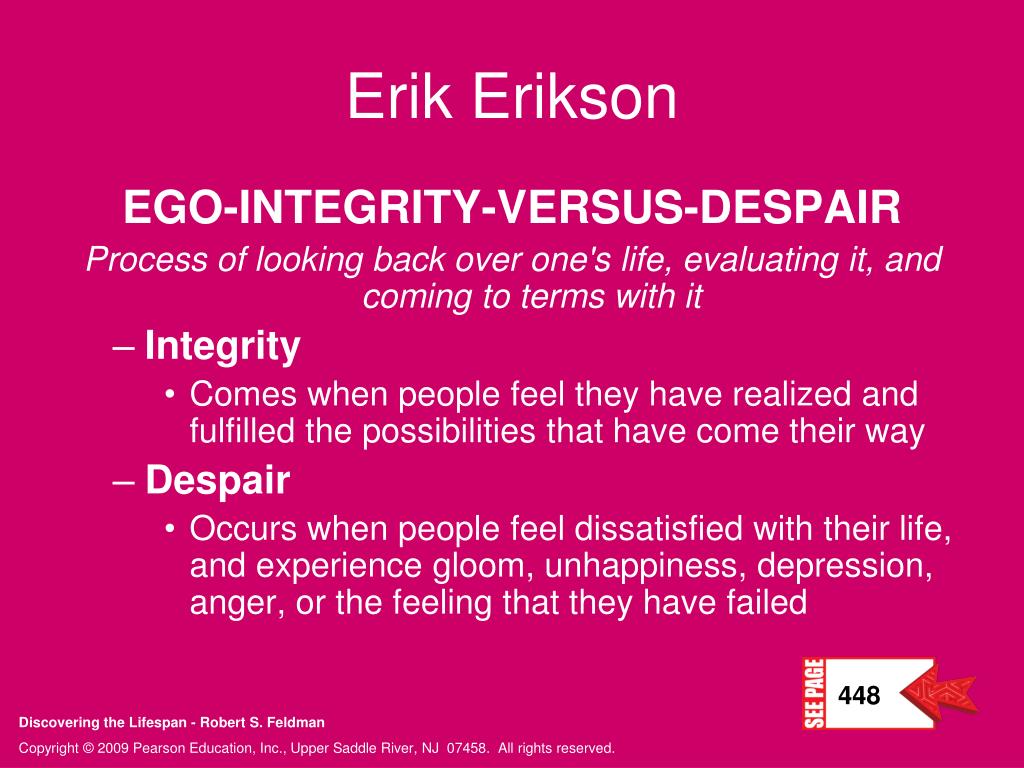
Likewise, higher ego integrity is also related to life satisfaction, along with lower depression, although its developmental arc into old age has not been examined. For instance, researchers have found that generativity peaks in midlife, with higher generativity being associated with satisfaction with life and with successful aging. High levels of generativity and ego integrity each reflect healthy personality development, according to both Erikson and recent research. And as with generativity, a lot of research has been conducted on ego integrity (the positive angle) with little research on despair (the negative angle). Coming on the heels of midlife, this stage is usually associated with older age and involves how people deal with the various physical, mental, and social losses associated with aging. Conversely, despair is the inability to accept one’s life, feeling that it has been inadequate, having regrets, and believing that there’s no time left to do anything about those regrets. Ego integrity, the positive side of this stage, involves coming to terms with the life that one has lived, warts and all. In Erikson’s scheme, the next (and final) stage of life that follows generativity vs. Traditionally, research has not focused specifically on stagnation, but examined it as the absence of generativity. The negative side to generativity’s positive side is stagnation: a lack of caring for others and high self-absorption. However, all of the stages that make up Erikson’s theory have two poles that represent positive and negative features of that stage. Creating things that may benefit future generations, such as gardens or works of art, or, on a grander scale, working to preserve planet Earth are also examples of generativity. Generativity involves caring and providing for later generations by doing things such as raising a family, mentoring, or volunteering. For example, Erikson proposed that a central change in midlife is the development of either generativity or stagnation, with generativity as the ultimate goal.

Theorist Erik Erikson believed that personality continues to develop throughout adulthood.


What aspects of character change as we age, and in what ways? Many have been interested specifically in personality development in later life. However, in the last couple of decades, researchers have recast the process of aging as one of development rather than decline. The picture is generally one of decline or – at best – maintenance, and for people in the second half of their lives, the future often appears to lack opportunities for continued development. Most research on aging has focused on the physical, mental, and social losses associated with getting old, such as physical limitations, diseases, cognitive impairment, retirement, and the death of people in one’s social circle. Aging, particularly from the viewpoint of youth, seems boring, depressing, and definitely not sexy.


 0 kommentar(er)
0 kommentar(er)
